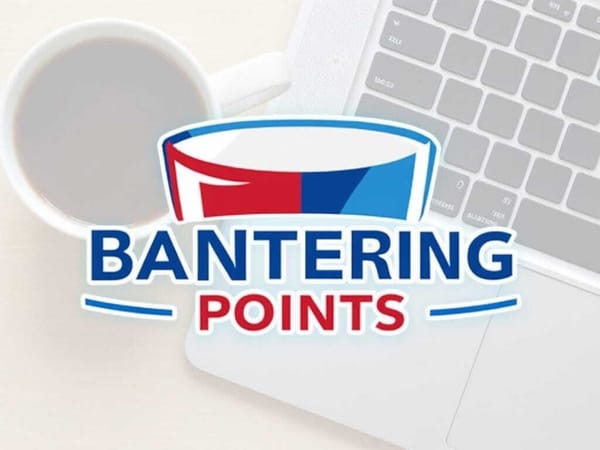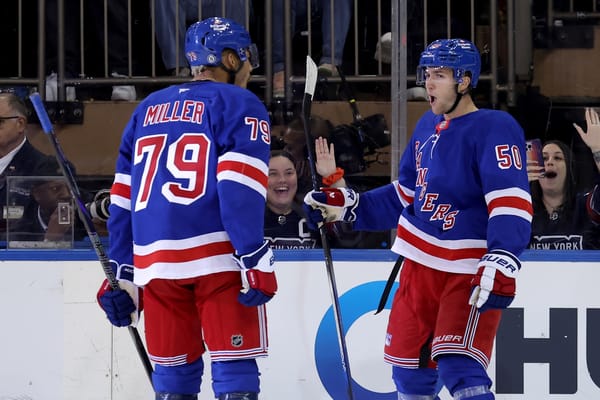Acquisition of Top Draft Picks is Essential to a New Era of Rangers’ Contention
“The Rangers are ready to re-stock. Now comes the next question: How far will they go? My sense is they are honest about who they are. They’re not interested in the “dreaded middle.”
So wrote Sportsnet’s Elliotte Friedman the morning of November 1st. The Rangers had just four wins through thirteen games at the time, pretty much everything was going wrong, and the sword of Damocles was hanging over Head Coach Alain Vigneault.
Though the team is in better shape now, they still do not appear to be a contender. The Rangers appear to be coming to terms with that, as multiple insiders are insinuating some degree of selling off of players at the trading deadline. Friedman now says that “there is a growing sense (the Rangers) just don’t see it long-term.”
Just six players from the 2014 Stanley Cup Final team remain. The average age of them is 31.33 years old. It’s time to turn the page and build towards a new era of contention.
The Pittsburgh Penguins, Chicago Blackhawks, and Los Angeles Kings have won eight of the last nine Stanley Cups. As such, it behooves the Rangers to reverse engineer those teams and figure out how they became perennial contenders. There are many components to each team, but the one fundamental shared aspect of their origin stories is a stockpile of early first-round picks over multiple years.
These teams needed a whole number of top picks to build the backbone of their franchises. A few home runs, a few players one tier below, some players who were used as trade bait - the Kings used Schenn and Bernier to acquire Marian Gaborik and Jeff Carter, for instance - and a few busts; you need some margin for error.
Quite simply, it’s extremely hard to get young, elite talent without very high draft picks. Yes, every so often a Nikita Kucherov or P.K. Subban falls through the cracks. But it’s going to become rarer and rarer as teams improve their methods of scouting. And once in a while a prime Joe Thornton or Tyler Seguin is put on the trade market. But a team’s best odds at acquiring the multiple franchise players necessary to consistently compete for a Stanley Cup comes from owning a number of top draft picks.
A look across the league shows this is not coincidental for these three teams.
Of the top-30 point producing forwards in the NHL over the 10 seasons, 11 - or more than a third - were drafted at first or second overall. More than half were drafted with a top-five pick, and nearly 75-percent were taken with a pick no later than 11th overall.
The importance of lottery picks becomes even more apparent when we narrow the list down to the top-10.
The reality of the NHL is that it’s practically impossible to have sustained, long-term success without multiple elite talents. And those talents are almost always acquired via high draft picks. This was true for the already mentioned Stanley Cup winners, who acquired at least some of their top players this way. It’s true of the Washington Capitals, St. Louis Blues, and San Jose Sharks as well; three of the winningest teams over that span.
The big exception has been the Boston Bruins. Their Stanley Cup win in 2011 came from some incredible drafting, a timely free agent signing of Zdeno Chara, and Tim Thomas playing absolutely out of his mind.
Let’s also address the fact that there have been teams who have failed to gain traction despite a number of lottery draft picks; the Islanders, the Oilers, and the Blue Jackets, etc. A team has to actually draft the right players, and then build a strong team around them. The point here is not that a number of top draft picks guarantees success, but rather that it is incredibly hard to succeed without them.
Back to the Rangers. The Rangers planned on a long rebuild at the 05-06 season. Turns out that they had arguably the greatest goaltending in NHL history waiting in the wings. Then, the stars aligned and Rick Nash forced a move to the Rangers. In a way, they beat the system. But in a way, they didn’t. If the Rangers come away with a Nicklas Backstrom in 2006, an Alex Pietrangelo in 2008, or a Vladimir Tarasenko in 2010, then do they win a Stanley Cup in 2014 or 2015? Are they still contending now?
But I digress. The point here is to figure out what the next steps are for the Rangers. Rick Nash’s age, if not imminent departure, leave the Rangers without any elite offensive talent. Lundqvist can’t keep this up forever. Who is going to be the star power going forward?
Lias Andersson, drafted 7th overall, is a start. Though he seems more like a potential match for Dustin Brown and Brent Seabrook rather than Evgeni Malkin and Patrick Kane. The upside is there for Filip Chytil to perhaps be a top hockey player, but he’s no sure bet, and even still is just one player. Igor Shestyorkin is one of the top goaltending prospects in the world, but anticipating a match for Lundqvist is unbelievably delusional. Even still, those are just three players who are, at best, on the fringes of stardom. Those Stanley Cup winners built robust prospect pools with dozens of highly skilled teenagers and reaped the rewards of a few.
General Manager Jeff Gorton committed to a “rebuild on the fly” last offseason, but like the Kings, Penguins, and Blackhawks have shown, there really is no shortcut to building a Stanley Cup team. The Rangers are seemingly prepared to move on from their current team as constructed, and that’s a good first step.
It will be interesting to see where they go from there, though. For the first time in years, their summer blueprint for winning a Stanley Cup must not look towards the next spring, but rather multiple years down the line. They need to find away to add some young players with the realistic potential to be superstars down the line. Unfortunately, the most realistic way of doing so requires multiple years of losing. If Rangers’ brass can’t find it within themselves to stomach that, then they’re going to have to get very creative and find other ways to do.
Otherwise, they might find themselves taking an extended stay in “the dreaded middle.”




